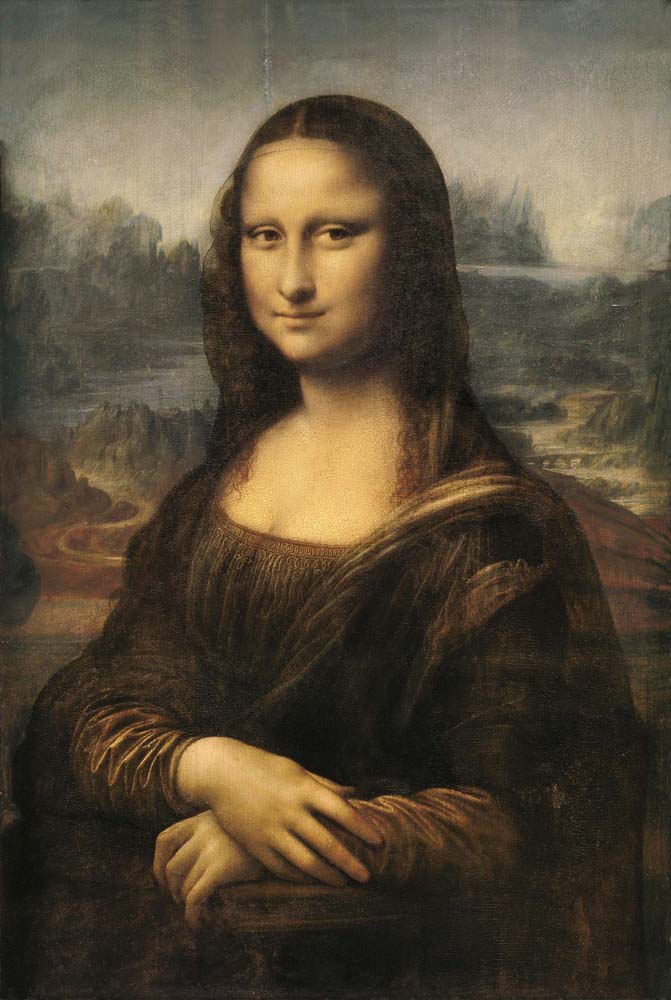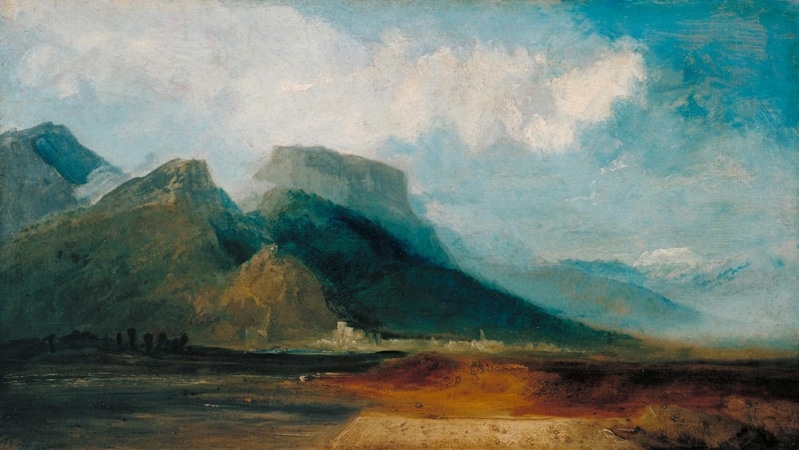What is perspective in art? Perspective is a technique that artists use to create the appearance of realism in their artwork. It gives the illusion of depth and distance, making an image look more lifelike.
In this blog post, we will discuss what perspective is and how Renaissance artists used it to create stunningly realistic paintings. We will also outline the methods for creating linear perspective and atmospheric perspective in an artwork. Find strategies to increase the realism of your artworks using accurate perspective.
Disclaimer: Fine Art Tutorials is a reader supported site. When you make purchases through links on this site, we may earn a small commission at no extra cost to you.
What is perspective in art?

Perspective is a way of creating the illusion of space, depth and scale in an artwork. It gives objects the appearance of receding into the distance, creating a realistic representation. Perspective can be achieved by manipulating the size and placement of objects within an image to create a sense of three-dimensional space.
Why is perspective important when creating realistic artworks?
Perspective helps create the illusion of realism, space and depth in a two-dimensional work. It allows artists to create more lifelike images that appear three-dimensional. Ultimately, this enhances viewer engagement by drawing them into the painting, creating a more immersive experience.
Perspective and the Renaissance: The history of perspective in art

During the Renaissance, artists like Piero della Francesca and Leonardo da Vinci developed a system of linear perspective which involved using mathematical principles to map three-dimensional space onto a two-dimensional surface. This allowed them to create realistically proportioned scenes that appeared to recede into the distance.

One of the most famous examples of perspective in Renaissance art is in Leonardo da Vinci’s painting, The Last Supper. In this work, da Vinci used linear perspective to create a sense of depth and space within the composition. He did this by using converging lines to create the illusion of the walls of the room receding into the distance.

Another example of da Vinci’s use of perspective is his portrait of Mona Lisa. By utilising foreshortening and atmospheric perspective, he was able to create an image that looked lifelike. The lighter values of the trees disappearing into the fog in the distance adds to this effect. Notice how the details in the portrait of Mona Lisa are full of saturation, contrast and warm tones. Conversely, the background elements are cooler in temperature, lighter in value, softer in appearance and less detailed. This is the effect of atmospheric perspective.
Leonardo da Vinci’s use of perspective was truly revolutionary for its time. His innovative approach helped pave the way for further artistic developments.
Types of perspective in art
Linear perspective and atmospheric perspective are two different ways of creating the illusion of depth in an artwork.

Linear perspective is defined as the use of converging lines and diminishing size to create the illusion that the subjects in a painting are located at a distance.

On the other hand, atmospheric perspective utilises colour, value (lightness or darkness), and texture to create depth within an image.
Linear perspective

Linear perspective is a type of perspective that uses a mathematical system to create the illusion of depth in artwork. It relies on the artist’s understanding of how objects recede into the distance when viewed from one single point. This concept is known as the vanishing point.

Essential components for creating linear perspective include a horizon line, which represents the eye level or vanishing point; orthogonals or lines radiating from the vanishing point; and converging lines, which depict objects at different distances from the viewer.
One point perspective

One point perspective is the form of linear perspective in which all the lines of an image converge at one point. In a landscape or cityscape, one point perspective can be identified by looking for imaginary lines radiating from the same vanishing point.
To construct a one point perspective drawing, begin by drawing a horizon and a vanishing point. Next, draw orthogonal lines (lines radiating outwards from the vanishing point). The next step is to draw your shapes, with edges connecting to the orthogonal lines . Finally, draw in any details, ensuring that all straight lines pass through your single vanishing point.
Two point perspective

Two point perspective is a form of linear perspective which uses two vanishing points instead of one. This type of perspective is useful for scenes here the viewer is looking directly at the corner of a building or room.
Draw the horizon line and make sure that the two vanishing points are spaced out sufficiently. Then draw orthogonal lines converging to each vanishing point, these orthogonal lines can cross. Make sure the outlines of buildings, roads and objects converge to the vanishing points and finish with the details.
Three point perspective is another type of linear perspective that is used to represent taller structures or landscapes viewed from a high or low angle.
Atmospheric perspective

Artists use atmospheric perspective to creates the illusion of depth and distance with colour and value. It is based on the observation that distant objects appear cooler and lighter in colour compared to nearby objects. This is due to the fact that blue light waves are scattered and reflected by molecules and particles in the atmosphere, making distant objects look hazy or blurry.
Atmospheric perspective also affects the appearance of details and edges; distant objects tend to have less defined edges, softer values and fewer details compared to closer elements. Therefore, artists must take this into consideration when creating works that are meant to appear as if they are situated at a great distance from their viewers.
For painters, one way to create the effect of atmospheric perspective is by painting features such as trees or buildings with lighter, cooler colours towards the background. These colours become more saturated and warm near the foreground. Additionally, the blending technique can be useful for softening distant edges. For pencil artists, they should aim to keep lines faint towards the background while gradually increasing pressure as they work towards the foreground. Blending tools, like tortillions can then be used for smoothing out textures and details. This will help add depth to your drawing by instilling a sense of space between elements.
Tips on how to improve perspective in art
- Creating accurate perspective in an artwork can greatly improve the overall impact of a piece. Make sure to get useful drawing tools, like a pencil, ruler and eraser for drawing the straight horizon and orthogonal lines.
- View catchers are also helpful for isolating specific sections of a scene in order to simplify complex compositions
- Learn how to accurately mix colours to improve your portrayal of atmospheric perspective. Add a little titanium white and blue to make distant objects appear cooler.
- When creating a linear perspective drawing, start with light lines that are easy to erase, this way you can fix any mistakes easily.
- When creating atmospheric perspective in a painting, use a blending brush to soften the appearance of distant elements.
- Finally, practice and experiment with different viewpoints! Changing the position of your viewer can help you to create interesting compositions and draw attention to certain focal points in a scene.

